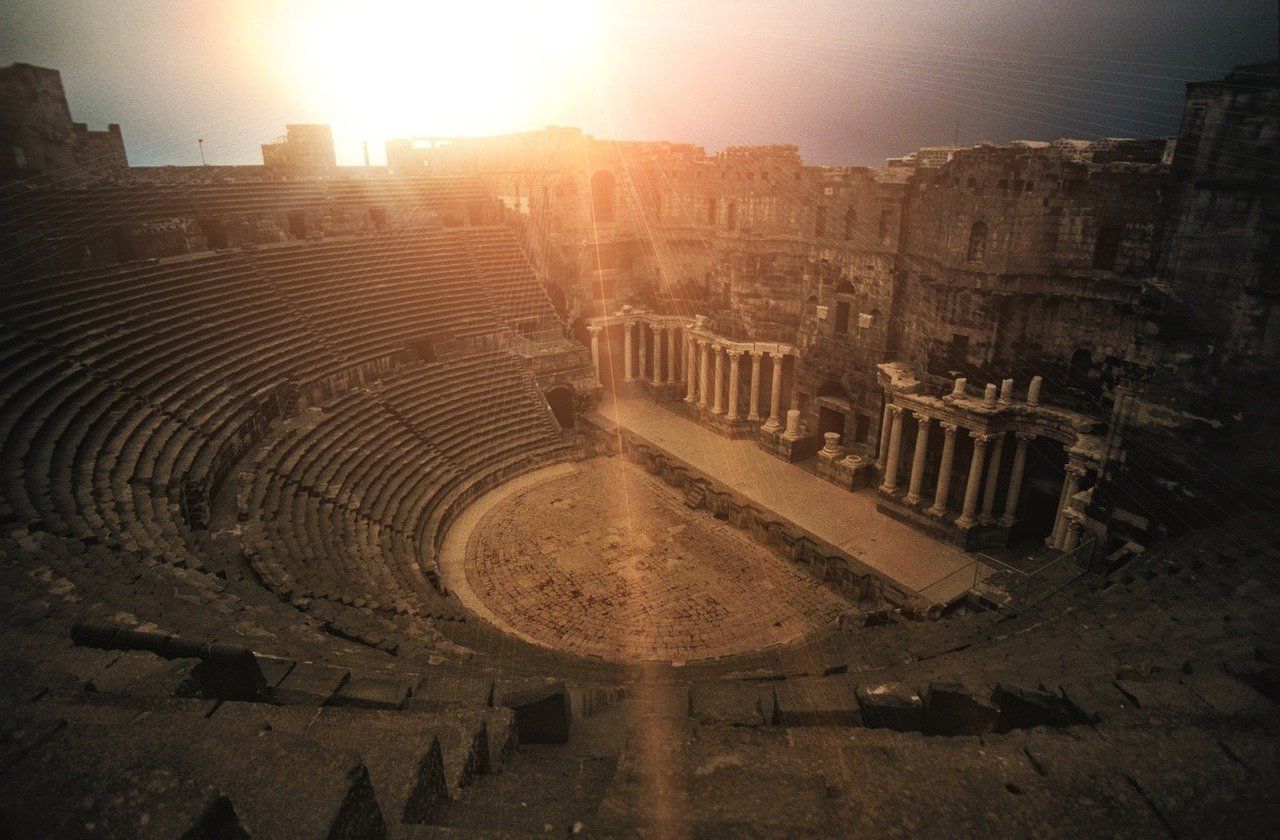After its absorption into the Roman Empire between 200 and 100 BC, the city of Pompeii became something of a resort community due to its location at the Bay of Naples. Wealthy citizens, with slaves in tow, flocked there, building spacious houses and attracting businesses–craftsmen and tradespeople, taverns and eateries, bathhouses and brothels. As the city grew up, the dictator Sulla reserved land for his army veterans and their families. For their amusement, one of the earliest stone amphitheaters was erected to feature the martial combat of gladiators among other games. This venue was completed, according to some scholars, 10 years prior to the opening of Rome’s legendary Colosseum.
Smaller than its Roman counterpart, the amphitheater at Pompeii was an impressive edifice nonetheless. Its height–measured from the geological depression in which it sits–and prominence gave attendees optimal views of the activities at floor level. A network of subterranean passages and chambers served as a holding facility for contestants. Romans from far and wide journeyed to Pompeii to enjoy the amphitheater’s spectacles. With the capacity to hold 20,000 spectators, the amphitheater was well equipped to welcome many from outside the city many loyal to one gladiator over another. In fact, on one occasion, a brawl broke out in the stands between local residents and fans from neighboring Nuceria. The riot was learned of by the Roman Senate, which suspended the Pompeii games as a result. This disciplinary action actually forestalled the completion of the Colisseum by 10 years due to fears of public disorder.
As is well-known, the amphitheater at Pompeii would not compete for audiences with the Colisseum. In 79 A.D., nearby Mount Vesuvius erupted, raining lava and ash on the seaside city…and most of the surrounding region. The Roman magistrate, Pliny the Younger, recounted the catastrophic event this way: It was a “cloud of unusual size and appearance,” akin to a pine tree that “rose to a great height on a sort of trunk and then split off into branches.” While most of the city’s occupants had time to flee before the ash and debris descended, the eventual outpouring of lava and sediment buried the city completely. The amphitheater was not spared.
Pompeii was gone and forgotten for centuries. In the 18th century, however, the beginnings of excavation arose. The initial forays into the amphitheater area were unproductive and hazardous. However, subsequent efforts in the 19th century revealed this facility largely intact despite the years of entombed dormancy. Because the amphitheater is set in a depression, supported by natural embankments, its entrances were discovered at the top tiers which accessed pathways to lower levels. Today, this restored ruin is a favorite destination for tourists. One measure of its popularity is the 1971 concert performed there by the rock band Pink Floyd.
Of all the restorations at Pompeii, the amphitheater is of perhaps the most significant. Considered the first (or among the first) stone amphitheaters in the world, it remains a positive testimony to the sophistication of ancient Roman engineering.




